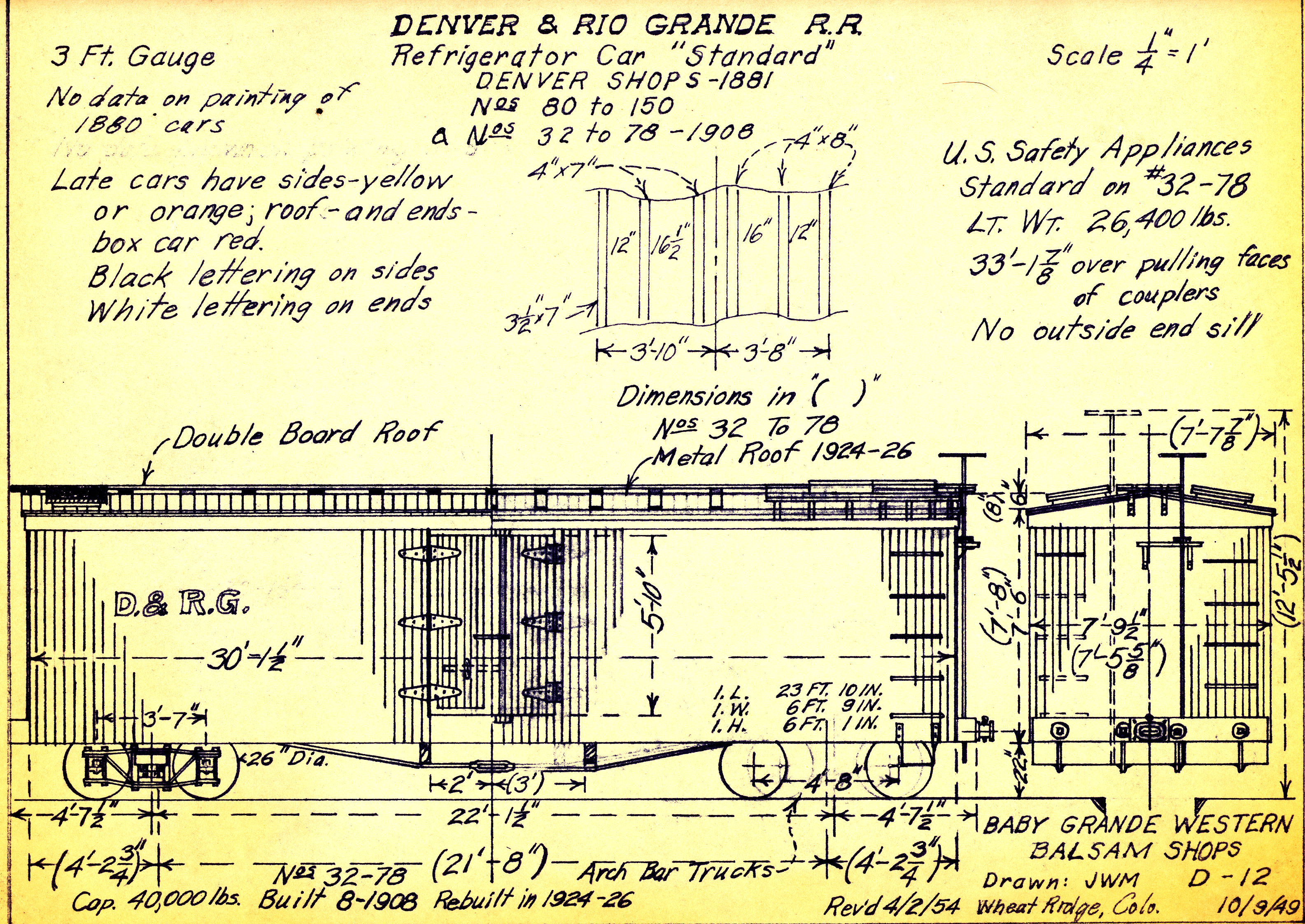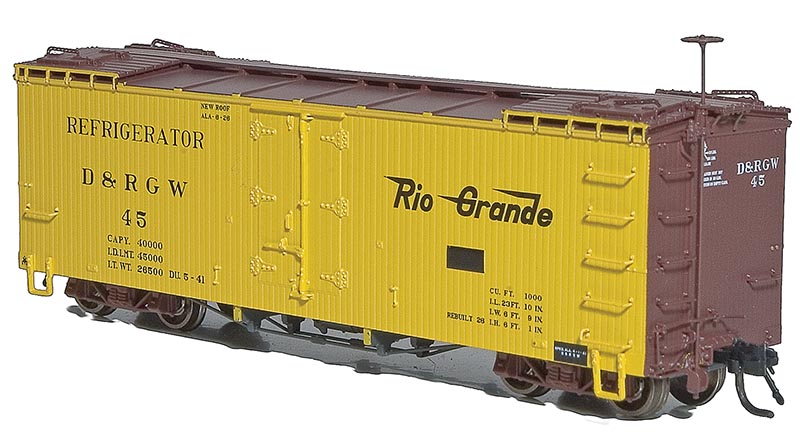“So you are telling me that the body of the car is about 6’ tall?”
From the top of the floor to the bottom of the roof joists, yes, about 6’ depending on the particular prototype. The 30’ cars (according to drawings published in Sloan’s “A Century +10…”) had a floor to ceiling clearance of about 5’ 11" along the wall. The 40’ cars had a bit over 6’ from the top of the floor to the bottom of the roof joists. The door opening would have been shorter than the floor-to-ceiling height because of the thickness of the beams that made up the top of the car side frame. The car data on the drawing in Sloan shows an inside height of 6’ 1 3/4". Photos of models show the height listed as 6’ 1". I don’t know between which two points they measure that, as the roof is pitched, thus higher in the center. Sloan describes the inside height as 6’ 4", despite the measurements and car data in his book stating something different. Outside, from the edge of the roof to the bottom edge of the siding on the car, you’re looking at 7’ 6" according to Sloan’s published drawings.
“I would like to see a scale drawing.”
John Maxwell’s drawing of the D&RGW cars can be found at this link. Maxwell has the door height listed as 5’ 10", but the door opening extends slightly below the floor of the car, and from what I can gather from comparing drawings in Sloan’s book, slightly above the top of the actual door opening as well. I’ve never seen the prototype refrigerator car with the doors open, so I can’t say for certain what the difference would be. Contemporary accounts of the construction of refrigerator car doors suggest the doors are tapered front to back for purposes of insulation. I don’t know if the D&RGW followed this or not. The actual door opening measured from the shop drawings published in Sloan show an actual opening between floor and bottom edge of the top beam on the side frame of 5’ 4" - 5’ 6". There’s a bit of guesswork based on the small scale of the reproduction. The doors would be fairly thick, though, due to the insulation of the car. Note: Maxwell’s drawing appears to be of the class 2r refrigerator car, as evidenced by the link-and-pin couplers and end beams. These were built in 1881. The class 4r refrigerators are nearly identical proportionally, but have modern automatic couplers and longer trucks.
“So the loco is 1:24 and the box car is 1:20.3 and a small prototype?”

In this photo, the loco is 1:24. The box car behind it is modeled to 1:20.3 of a small prototype, but it’s basically an elongated Bachmann box car. I didn’t change the width or the height, so for the purposes of this illustration, we can take the box car and stock car (LGB) to be 1:22 / 1:24–the same size as the equipment seen behind the locomotive running on the Woodland Ry.
Since you mentioned it, though, the box car in this photo is a model of an early Billmeyer & Smalls car (c. 1873), whose inside height was all of 5’ 8", with a door opening of around 5’ 2". Yeah… duck. By contrast, the box car in the other photo is a model of the EBT’s “2nd-generation” box car, which was considerably larger, with an inside height of 6’ 10". Here’s a photo of the two coupled together:

Both of these cars accurately model their prototypes in 1:20.3. You’re looking at a difference of about 30 years’ time between build dates.
“Hmm… is this the type of car we are seeing?”

Yes. The D&RGW class 4r refrigerator cars, numbered 31 - 80, built in 1908, rebuilt in the 1920s. That was the prototype upon which the LGB, USA (which was really an LGB knock-off), and Delton wood refrigerator cars were based. Not saying they got it 100% right, and I don’t have any here to measure, but it’s at least based on that. The Delton reefer is slightly longer, but a whisker lower than the LGB / USA reefer.
Later,
K











